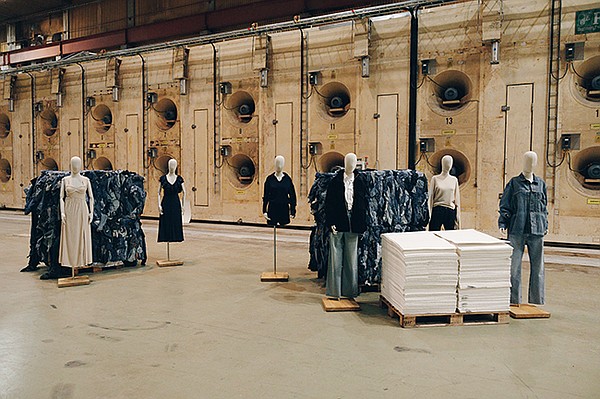Following the announcement that Renewcell — once a leader in material recycling — filed for bankruptcy, the call to action for the fashion industry to support sustainable solutions has never been greater.
Waste, is, without a doubt, one of the biggest issues plaguing the fashion industry. The amount of garments and textiles that end up in the landfill every year is unfathomable. Every second, a truckload of clothing waste ends up in the trash. The majority of those will be made from synthetic fibers, which means they won’t break down, and will instead hang around for centuries, leaching microplastics into the soil and contributing to potent landfill greenhouse gas emissions.
But there are solutions, and Swedish company Renewcell offered one of the biggest. Its technology could turn old garments with a high cellulose content (like cotton t-shirts and jeans) into a new material, called Circulose. But despite this effective and innovative solution to one of fashion’s biggest problems, it seems that the company wasn’t meant to be, as it filed for bankruptcy last month.
What went wrong?
What happened to Renewcell?
Renewcell was founded more than a decade ago, and its technology was backed by some of fashion’s biggest names, including H&M. In 2020, the two companies announced a multi-year partnership that would see them replace virgin fibers with recycled ones. This move reduced waste and helped to limit the amount of resources used by the fashion industry. Producing new fabrics is resource-intensive; just one pair of jeans requires more than 3,780 liters of water, according to the United Nations.

But after failing to secure enough capital from H&M in early 2024, as well as its other biggest shareholder Girindus, and its multiple existing lenders, it had no choice but to fire for bankruptcy. At the time, Michael Berg, Renewcell’s chairman of the board of directors, said: “This is a sad day for the environment, our employees, our shareholders, and our other stakeholders, and it is a testament to the lack of leadership and necessary pace of change in the fashion industry.”
But while the Swedish company blamed its decision on a lack of support, some experts suspect other factors also led to the situation. Sustainability expert Brooke Roberts-Islam recently wrote for Forbes that Renewcell’s failure could be partly due to its location and position in the supply chain. In her view, it was a case of right technology, wrong place.
She notes that due to the company’s requirement for high amounts of cotton, it would make sense for it to be located where all the off-cut waste is. And for the most part, that is not in Europe or the U.S., but in Asia. Research suggests that the world’s largest textile producers are located in China, India, and Pakistan.
“Why, I still wonder, is the hopes of textile-to-textile recycling hinged on fashion brands in the Global North with other priorities, who procure products from the supply chain in the Global South?,” she wrote. “Why isn’t the advancement of textile technologies being integrated into the supply chain, since brands procure and sell finished goods, not fibers?”
Fashion has to compromise, the industry can’t give up on sustainable fibers
Fashion has to learn lessons from Renewcell’s bankruptcy. Supply chain positioning is evidently important, but it is also up to brands to get behind the technology. Most still opt for virgin fibers, because, quite simply, they are cheaper. “Sustainability professionals in fashion remain no match for finance managers,” Ken Pucker, a professor of practice at the Fletcher School at Tufts University recently told GreenBiz.
But it’s not all bad news. Sustainable material innovators that do seem to be succeeding right now include Aquafil, which makes a form of regenerated nylon out of fishing nets, old carpets, and industrial plastic waste called Econyl. Brands that have used the material include Adidas, Burberry, Prada, and Stella McCartney.

Recently, sustainable textile pioneer Evrnu teamed up with menswear designer Christopher Bevans to create a cream-colored hoodie made entirely out of cotton waste. The fabric, called Nycycl, is also compostable, biodegradable, and can be recycled again and again and again.
“I’ve traveled the world and been inside many factories,” Bevans said. “I’ve seen so much wastage. Recycling capabilities are here, and it’s time for us to push the industry to adopt them.”
H&M doesn’t appear to be giving up either. Earlier this month, the fashion giant announced a new joint venture with Northvolt AB, asset manager TPG, and Vargas Holding AB, called Syre. Through the project, H&M hopes to produce more than 3 million metric tons of polyester made with textile waste.
“Syre marks the start of the great textile shift,” said Dennis Nobelius, Syre’s new chief executive officer, in an interview, per Bloomberg. “By implementing true textile-to-textile recycling at hyperscale, we want to drive the transition from a linear to a circular value chain by putting textile waste to use, over and over again.”
Related on Ethos:


